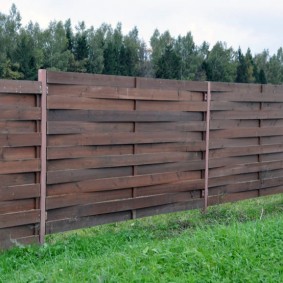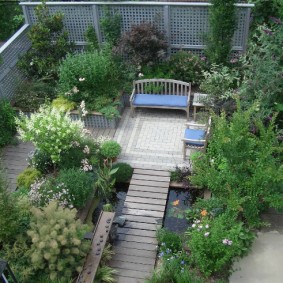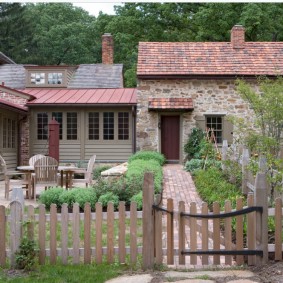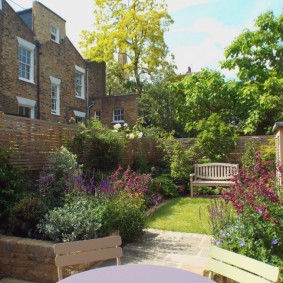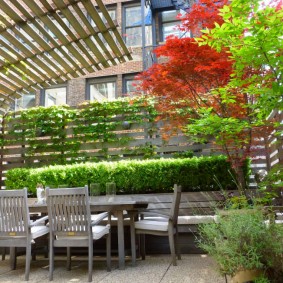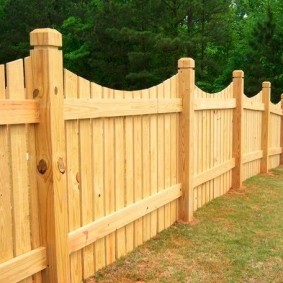 Landscape design
On the layout of the plot on 12 acres - landscape design options
Landscape design
On the layout of the plot on 12 acres - landscape design options
Wooden fences are now back in fashion. And no wonder: they are environmentally friendly, beautiful and pleasant. There are many types of fences made of wood, which differ in their design features. In turn, this affects many factors: appearance, design, strength, features of construction and use.

You can make a wooden fence with your own hands, while not spending a lot of money
In order to choose the right hedge for the site you need to be well versed in such subtleties. This will allow you to choose not only a beautiful, but also a practical option.
What types of wooden fences are there?
Content
Types of fences made of wood are distinguished both by material and by the pattern of its laying. By the type of materials, the fences are divided:
- From the croaker.
- Stockade.
- From the boards.
The product from the waste from the production of boards or slabs (the remnants of a tree trunk processed only on one side, on the other hand a semicircular bark) are quite cheap to produce due to the cheapness of the material. The gorbel here is attached to the pillars-bases horizontally. However, the product is difficult to install, since uneven edges of the wood are more difficult to fix. Such a fence looks very stylish - like an old village fence.

A blind slab fence is beneficial when it comes to building a low-cost and attractive fence with your own hands.
Palisade - a fence made of logs with a pointed end. It looks very original and reliable. It has the longest service life - several tens of years, easy to install. However, it has a high cost due to the high cost of the material and its transportation.

Fence picket fence - one of the oldest fencing options
A board fence is the most common. This is due primarily to the ratio of the cost of materials and installation, and a large number of design ideas. Many people choose boards, precisely because many beautiful modifications come out of them.

The board fence may look the way you want
What are the design options for plank fences?
The most popular varieties are not more than a dozen, they are separated by the way the boards are arranged. Based on these classic modifications, designers are already developing their exclusive solutions to beautiful wooden fences.
The main types of plank fences:
- Classical.
- Chess.
- Ranch.
- Lattice.
- Ladder or Christmas tree.
- Network.
- Cross.
Simple options for wooden fences
A classic wooden fence is also called a picket fence. Horizontal rails are attached to the wooden vertical supports, to which, on the one hand, vertical boards are nailed or screwed. Moreover, between them the gap may be completely absent, which makes the fence solid. There may be a gap - many saw such fencing at the dachas in Soviet times, and even now they can be found in villages. The product is very easy to install - even an amateur can make it.

The fence from the fence as a result is quite strong and reliable
"Chess" is a wooden fence created on the principle of a picket fence. But in it, vertical or horizontal boards are beaten on both sides of the horizontal battens in a checkerboard pattern.This creates a very interesting bulk effect. Such options are also easy to install and many can do it yourself without the help of specialists.

The vertical arrangement of the boards on the fence “chess” without gaps
In "chess" you can see many varieties of the arrangement of boards. The most common option is vertical chess without a gap or with a gap. Chess without a gap is perfect for external framing of the site, reliably closing it from prying eyes.

A wooden fence will last much longer if you attach the fence sections to metal or brick poles
Vertical chess with a gap - suitable for delimiting the space between neighboring sections or within the same section. The voluminous appearance and play of rays of light passing through the gaps makes the fence very interesting and not boring.
Another variant of "chess" is horizontal. In it, the web material is located horizontally, and the guide rails are respectively vertically. Usually such a wooden fence is made solid, without gaps.
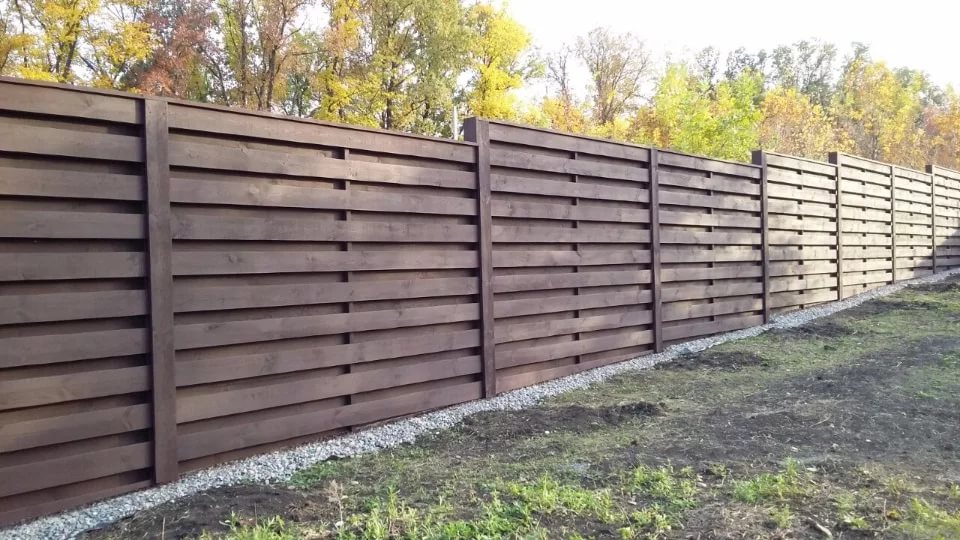
Wooden fence “chess” without gaps looks solid and reliably hides the site from the views of neighbors
Horizontal chess is not suitable for the external fence of the site, since the boards form a convenient ladder in it, along which an obstacle can easily be overcome. This kind of hedge is suitable for gazebos, interior zones on plots, etc. The horizontal arrangement of the boards will be convenient for hanging flower pots or for climbing plants.
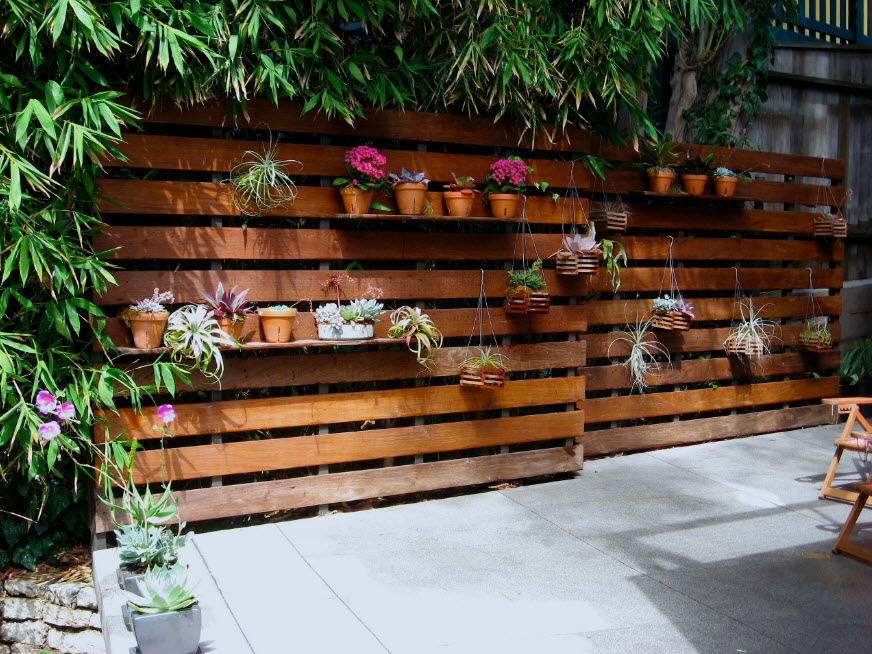
On horizontally arranged boards it will be convenient to fix the shelves for flower pots
Another simple kind of fence - a ranch. A very simple type of fence and the least popular in Russia. The option is so simple that it’s difficult to call it a fence. The product consists of vertical supports, at a great distance from each other and several horizontal rails between them. As a rule, these are 2 or 3 horizontal slats. Suitable for distinguishing zones in the country inside the plot.
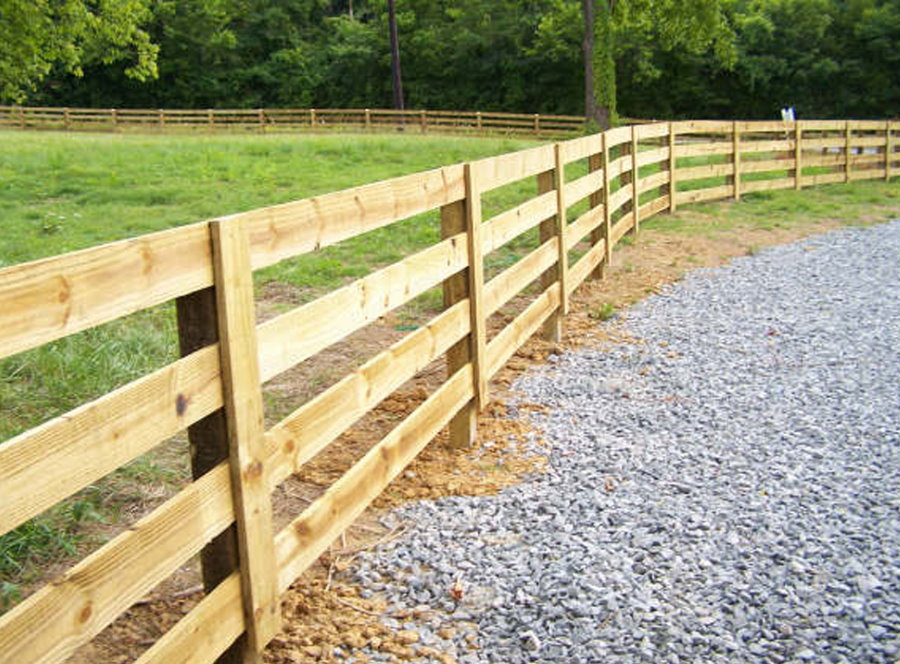
Such a fence will clearly indicate the territory, but will not hide from prying eyes
Sophisticated options for wood fences
More complex types of wooden fences are: "lattice", "ladder" or "herringbone", "wicker" and "cross". These beautiful wood fences are pictured here.
These products are more complicated to install and require special skills. However, they look more stylish and presentable.
The fence "lattice" is a rail mounted on the frame at an equal distance at an angle of 90 degrees to each other. Thus, a neat grid of squares is obtained. The most frequent and beautiful pattern is slats fixed at an angle of 45 degrees to the ground. This type of wooden fence is more difficult to mount and requires more perseverance than slats fixed in parallel and at 90 degrees to the ground. Fence "lattice" is used to design arbors, children's areas and recreation areas. It goes well with green decor: climbing plants and flowerpots.

A wooden fence in the form of a lattice is not the most durable, but very beautiful, as if openwork
Wooden fence "ladder" or "herringbone" is a bit like a classic horizontal option. Horizontal boards are also attached to vertical guide rails. However, the slats themselves are not even, but with corners-puzzles. On their own they resemble a ladder. Thanks to this, the boards lie at an angle of 45 degrees and gaps are obtained between them, which at the same time do not open the space for viewing.

It looks like a classic wooden fence "ladder"
There are two advantages of such a wooden fence: a beautiful and unusual appearance and ease of use for an external fence. On the one hand, it turns out continuous for a look and completely closes the review.On the other hand, due to air gaps, the hedge has less windage, when installed in place with strong winds, this can be significant. There is only one drawback in this fence - the complexity of installation.

Variant of execution of the "ladder" of slab
The fence made of wood "wicker" is one of the most complex fences, but at the same time the most colorful. The prototype of this fence is the well-known wattle fence, but modern modification is made of boards.
The material for such a product requires very high quality and fresh, since it requires high ductility. Installation requires special skills and experience. Another drawback of such a product is its short service life of 5-7 years, since the tree deforms when it dries due to deflections.
The location of the boards here is horizontal, while they are mounted alternately on one and the other sides of the vertical rails. In some ways, it resembles chess, but the boards at the same time change the side of the fastener not only through one, but also at each end.

According to the manufacturing technology, such a fence is similar to ordinary wattle fence
The main advantage of the “wicker” wooden fence is its picturesqueness and color. "Braid" closes the view well from prying eyes, but the weave creates a small ladder, which is easy to climb to the site.

Wicker fence with vertical arrangement of elements
Another variety of “wickerwork” is the execution of a thick strong vine with a diameter of 5-10 cm. This is also a more expensive option, since you need to pick up such a vine and correctly fold and secure it. Such work can be done by a highly qualified specialist with wide experience. The advantages of such a wooden fence in its original and colorful form. In addition, this type of fencing, as well as the "ladder", allows the wind to pass through, while closing the view tightly for prying eyes.

This wattle fence allows you to create a very original atmosphere on the site
The last type is the “cross”, which combines stone and concrete supports and a wooden canvas. The fence gives the impression of strength and reliability. First, a stone or concrete base with guides is installed, and then a fence sheet is attached to it vertically or horizontally. Such a wooden fence is made solid and is ideal for external fencing of sites.

Stylish wooden fence on solid concrete pillars
Fencing wood: strength, reliability and beauty
The choice of wood determines not only reliability and durability, but also the appearance of the hedge. Having picked up different types of wood, you can create beautiful patterns and find stylish color schemes. The most popular varieties of wood are conifers, they are cheap, durable, resistant to harmful insects and atmospheric phenomena. This is a pine, spruce, larch. These types of wood have light colors. A wood soaked with a special composition can acquire dark tones. Oak is less commonly used, as it is more expensive. Oak has dark tones, durable and reliable.

A wooden fence is still a popular option for fencing due to the availability of material, sufficient ease of manufacture and attractive appearance
Combining wood of different colors, you can fold the original patterns.
Beautiful options for wooden fences
The most beautiful is the combination of the original arrangement of the boards and the color scheme. The space for creativity is unlimited. It can be boards of different tones, arranged in a checkerboard pattern, stripes or in a geometric pattern.

Painting shtaketin in different colors is the easiest way to customize the decor of the fence.

A simple wooden fence can be decorated with lattice inserts

Beautiful fence of horizontally arranged boards with curly cuts

An interesting combination of “braids” and “chess” in one wooden fence
The use of wood of different colors in a staggered manner is well suited for hedges of "chess" or "braid". The cross alternation of rails of various colors, which creates a geometric pattern, is suitable for fences "lattice". Another option is the location of additional slats on the hedges in the form of a geometric pattern - rhombs, squares or sawn out wavy patterns. If the wood is different in color, such a wooden fence will look truly highly artistic and delight the owners.
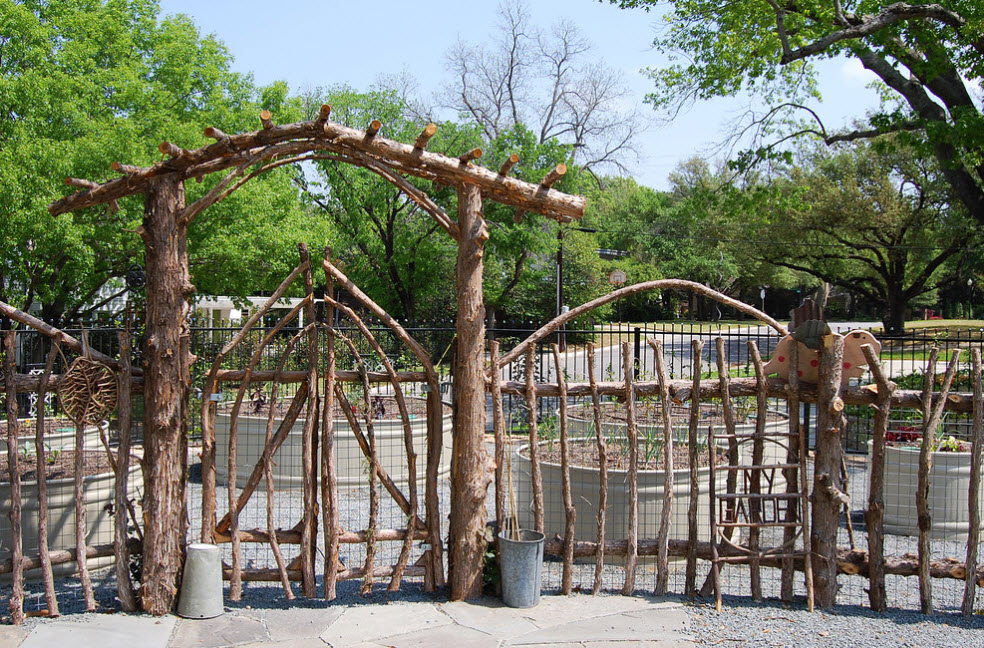
A decorative fence made of thick branches is suitable for a rustic-style site

A modern version of the picket fence - a bamboo fence

Beautiful artistic performance of a wooden fence
Video: Modern braided fence



